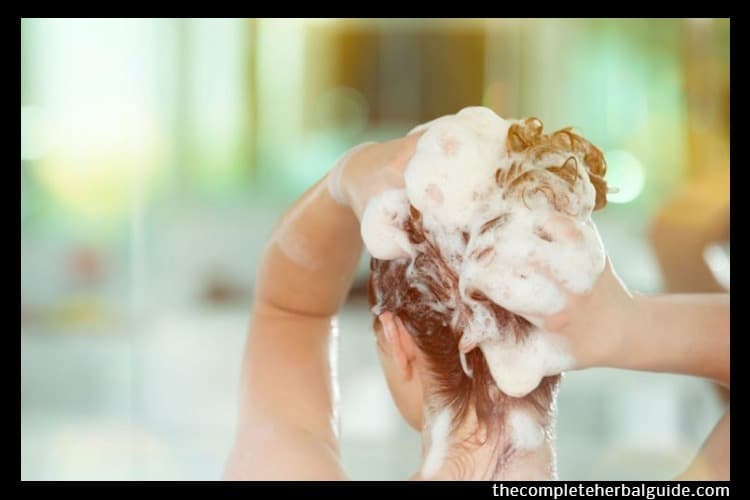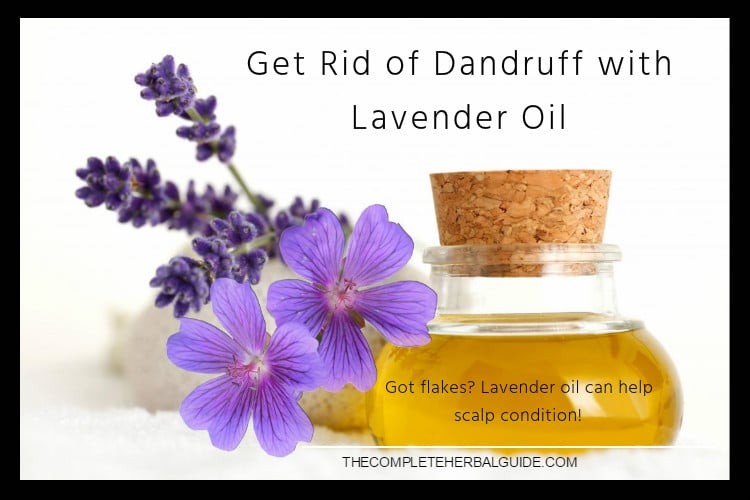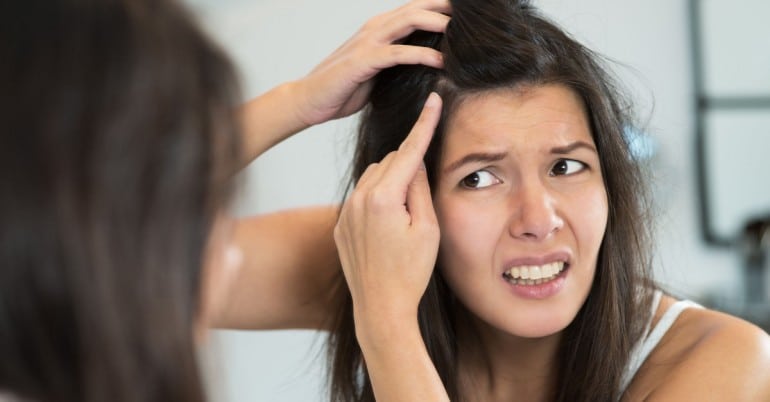
6 Natural Ways to Eliminate Dandruff
Table of Contents
White Flakes Pose No Health Risk
Dandruff isn’t contagious. So how do you get it? Doctors aren’t sure, but one theory is that it may be due to an overgrowth of a fungus. Other possible risk factors include oily skin, stress, obesity, cold, dry weather, and having eczema or psoriasis. Although it’s embarrassing — and the itching can be bothersome — dandruff isn’t harmful.
To decrease the buildup of dandruff’s dead skin cells, try using an antidandruff shampoo daily. Leave shampoo on for 5 minutes, then rinse well. You may need to try several dandruff shampoos to find one that works best for you. If one stops working, try another. If that doesn’t help, call your doctor.
Yellow Dandruff
If the dandruff flakes you see are greasy and yellow, you may have seborrheic dermatitis. It’s an inflammatory skin condition that can occur where there are lots of oil glands, like the scalp and face. Though seborrheic dermatitis is related to hormones, fungus, and even some neurological problems, it’s treated the same as dandruff: with antidandruff shampoos. Severe cases may need a prescription steroid or antifungal medicine.
Curing Dandruff Naturally
You may not realize it, but you are constantly shedding dead skin cells from all over your body. It’s the skin’s natural way to rejuvenate itself. In fact, you get a whole new suit of skin about every 27 or 28 days. The old stuff just sort of flakes away. You just don’t tend to notice the tiny skin cells dropping off your arms, your legs, and even your scalp. Dandruff results from the same shedding of skin cells. But if the shedding process is normal, what happens to make dandruff so embarrassingly noticeable?
Scientists have discovered that dandruff occurs when a yeast-like fungus called malassezia goes wild on your scalp. The microscopic malassezia fungus, a normal inhabitant on a healthy human head, feeds on the fatty oils secreted by hair follicles in the scalp. But sometimes, for reasons that are as yet unclear, the fungus grows out of control, causing irritation that actually speeds up cell turnover on the scalp. As a result, the normal process of cell turnover, which usually takes a month, may take less than two weeks when out-of-control malassezia has irritated the scalp. So many dead cells are shed at the same time that, when they mix with the oil from the hair follicles, they tend to form greasy clumps big enough to be clearly visible to the naked eye. The oil also makes the clumps more likely to get stuck in your hair (and on your shoulders), rather than floating quickly away.
Shampoo each day to keep it away

What easier way to get rid of dandruff than to wash it down the drain? Getting rid of excess oils (which may contribute to the overgrowth of malassezia in the first place) and flakes through daily shampooing may be the easiest way to tame your mane.
Switch Shampoos
If your regular shampoo isn’t doing the trick, even with daily washing, it’s time to switch to an anti-dandruff shampoo. Check the ingredients in over-the-counter dandruff shampoos, and look for one that contains zinc pyrithione, which can reduce the fungus; selenium sulfide, which can limit cell turnover and possibly even decrease the amount of fungus; salicylic acid, which works as a sort of scrub to slough off dead skin; or ketoconazole, which works against a broad array of fungi.
Go for three
Rotate your dandruff shampoo to prevent resistance to the active ingredient.  Your favorite dandruff shampoo may stop working after a while, and those little flakes may return. Don’t blame the shampoo. You simply may have built up a resistance to its active ingredient. To prevent this, try rotating three brands of dandruff shampoo (each with a different formulation), using each for a month. In other words, use one shampoo for a month, then switch to a second brand for a month, then to a third brand for a month, then back to the original shampoo for a month, and so on.
Your favorite dandruff shampoo may stop working after a while, and those little flakes may return. Don’t blame the shampoo. You simply may have built up a resistance to its active ingredient. To prevent this, try rotating three brands of dandruff shampoo (each with a different formulation), using each for a month. In other words, use one shampoo for a month, then switch to a second brand for a month, then to a third brand for a month, then back to the original shampoo for a month, and so on.
Tea Tree Oil
Tea tree oil is an essential oil that comes from the leaves of Melaleuca alternifolia, a plant native to Australia. It has been used for centuries as an antiseptic and anti-fungal agent. There are many tea tree oil shampoos available in health food stores and some drug stores, and many people report these products help with dandruff.There has been little research on the use of tea tree oil for dandruff. One study involved 126 people with mild to moderate dandruff.
They used either a five percent tea tree oil shampoo or a placebo daily for four weeks. At the end of the study, the tea tree oil shampoo significantly reduced dandruff. No adverse effects were reported. Although promising, this was not a double-blind study (which means that the researchers knew which participants were using tea tree oil and which were using the placebo), so it cannot be considered solid evidence that tea tree oil works.
Apple Cider Vinegar
A home remedy for dandruff is to mix 1/4 cup apple cider vinegar with 1/4 cup water. Pour this mixture into a spray bottle and spritz it on to your hair and scalp, being careful to avoid the eye and ear area. Wrap your head in a towel. After 15 minutes to an hour, remove the towel and wash your hair. This is generally done once to twice a week.
Biotin
Biotin is a water-soluble B vitamin that helps to break down fats, carbohydrates, and proteins. It is sold in supplement form and is also found naturally in foods. Food sources of biotin are egg yolk, liver, milk, soy, barley, brewer’s yeast, and royal jelly. Biotin is also produced naturally by bacteria in the intestines. Eating raw egg whites and prolonged use of antibiotics are thought to be causes of biotin deficiency.






